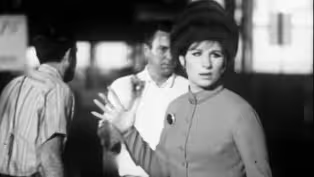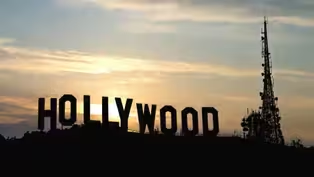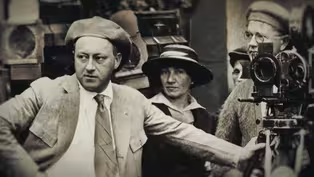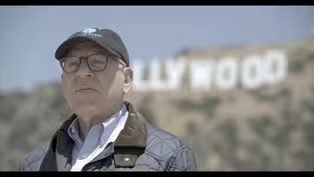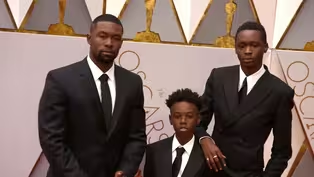
Often Imitated, Never Duplicated
Clip: Episode 2 | 3m 15sVideo has Closed Captions
From Dollywood to Bollywood & Nollywood, the Hollywood sign has inspired many imitators.
From Dollywood to Bollywood in India and Nollywood in Nigeria, the Hollywood sign has inspired numerous imitations and replicas around the world, but stands alone as a unique and internationally recognized symbol of the American entertainment industry.
Problems playing video? | Closed Captioning Feedback
Problems playing video? | Closed Captioning Feedback
Iconic America: Our Symbols and Stories with David Rubenstein is a production of Show of Force, DMR Productions, and WETA Washington, D.C. David M. Rubenstein is the host and executive...

Often Imitated, Never Duplicated
Clip: Episode 2 | 3m 15sVideo has Closed Captions
From Dollywood to Bollywood in India and Nollywood in Nigeria, the Hollywood sign has inspired numerous imitations and replicas around the world, but stands alone as a unique and internationally recognized symbol of the American entertainment industry.
Problems playing video? | Closed Captioning Feedback
How to Watch Iconic America
Iconic America is available to stream on pbs.org and the free PBS App, available on iPhone, Apple TV, Android TV, Android smartphones, Amazon Fire TV, Amazon Fire Tablet, Roku, Samsung Smart TV, and Vizio.
Buy Now
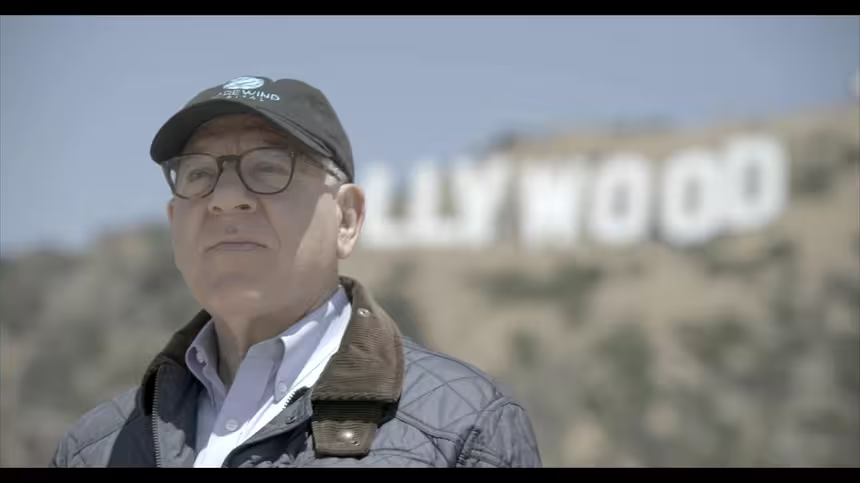
Our Symbols and Stories
David Rubenstein examines the history of America through some of its most iconic symbols, objects and places, in conversation with historical thinkers, community members and other experts. Together, they dive deep into each symbol’s history, using them as a gateway to understanding America’s past and present.Providing Support for PBS.org
Learn Moreabout PBS online sponsorship(upbeat music plays) - Okay, so where are we right now?
- We are on Mount Lee, which is the site of the Hollywood sign.
- [David] Let's say The key doesn't work.
Oh.
- [Woman In Hat] I got it.
Must be the foliage, but come on in.
- Okay, so here we are above the Hollywood sign.
- [Woman In Hat] And I've got the rope.
I can tie it off if you guys wanna go all the way down.
- [David] This doesn't look safe to me to go down there.
- [Woman In Hat] It's incredibly steep.
Unlike other landmarks that were built to be landmarks this was, you know, an advertisement for a suburban real estate development.
Yeah, it's not necessarily safe to go right up to it.
- [David] Now in the United States, do you know of any other sign that is as iconic, just a sign, as opposed to building or something else like that?
- No, I don't think so.
I think the Hollywood sign is unique in that way.
I mean, most of the iconic places in the United States, Mount Rushmore, Statue of Liberty, the Golden Gate Bridge, you know, are actually there for particular purpose.
Hollywood sign is a word, and I think that would, it's part of its magic that people can project onto it whatever meaning they want.
- [David] In 1923, the Hollywood sign was put up.
Originally it didn't say Hollywood, it said Hollywoodland.
Why did it say that?
Who actually owned the land at that time?
- The owners of the land were the was the Hollywood Land Company, and that's where the sign was gonna be as a promotional billboard essentially.
And Harry Chandler said it should be seen from Wilshire Boulevard by somebody driving along in a car touring Los Angeles, as so many people were doing at the time and saying, oh look, this says Hollywood land.
Maybe that's interesting.
Let's go drive up there.
Maybe we can find a property.
Maybe we can build a house there.
Maybe we can move to Los Angeles.
I mean, that's clearly what he wanted them to feel.
- And it said Hollywood Land.
- It said Hollywood land at that point.
That's the name of the company.
- Now, has there been a case where some people came in and tried to change the sign or use it for protests or anything like that?
- Many times, many times over the years until more security was built up around the sign.
UCLA and USC would change it because of their crosstown rivalry.
It was changed twice for Ross Perot.
It said Perrot Wood when he was running for president.
There was a variety of ways some people would come actually over the years and modify the sign in a variety of the ways the, the first person who did it was a young man named Danny Feingood.
He got two pieces of black material and two pieces of white material and changed Hollywood to Hollyweed.
High school kids would come up and smoke dope or you know have sex or do whatever they're doing there and write their names on the sign.
- You think high school kids are having sex having that Hard to believe.
- It's fairly hard to believe, but you know but maybe the sign encouraged themselves.
- Okay.
And Dolly Parton hasn't come, tried to make it into Dollywood?
- Not yet.
Not yet.
But interesting with Dollywood, you know the idea of Hollywood as a kind of autonomy, you know for everything that happens in the movie business it just gets co-opted Dolly Parton co-ops it India co-ops it for Bollywood, Nigeria co-ops it for Nollywood.
So it, you know it just becomes this kind of instant signifier.
Could Hollywood Be Successful Again?
Video has Closed Captions
Clip: Ep2 | 1m 10s | A once-popular genre enjoyed a renaissance and helped save Hollywood in the 60s. (1m 10s)
Hollywood as the Ultimate LA Symbol
Video has Closed Captions
Clip: Ep2 | 1m 14s | This clip explains the role that car culture played in creating this timeless icon. (1m 14s)
Video has Closed Captions
Clip: Ep2 | 1m 22s | This clip looks at some of the anecdotes and myths about the origin of the Hollywood. (1m 22s)
Video has Closed Captions
Preview: Ep2 | 31s | The story of how a real estate advertisement international symbol of the American dream. (31s)
Video has Closed Captions
Clip: Ep2 | 1m 2s | Hollywood has bottled a kind of intangible magic that is inaccessible to most people. (1m 2s)
Providing Support for PBS.org
Learn Moreabout PBS online sponsorshipSupport for PBS provided by:
Iconic America: Our Symbols and Stories with David Rubenstein is a production of Show of Force, DMR Productions, and WETA Washington, D.C. David M. Rubenstein is the host and executive...
